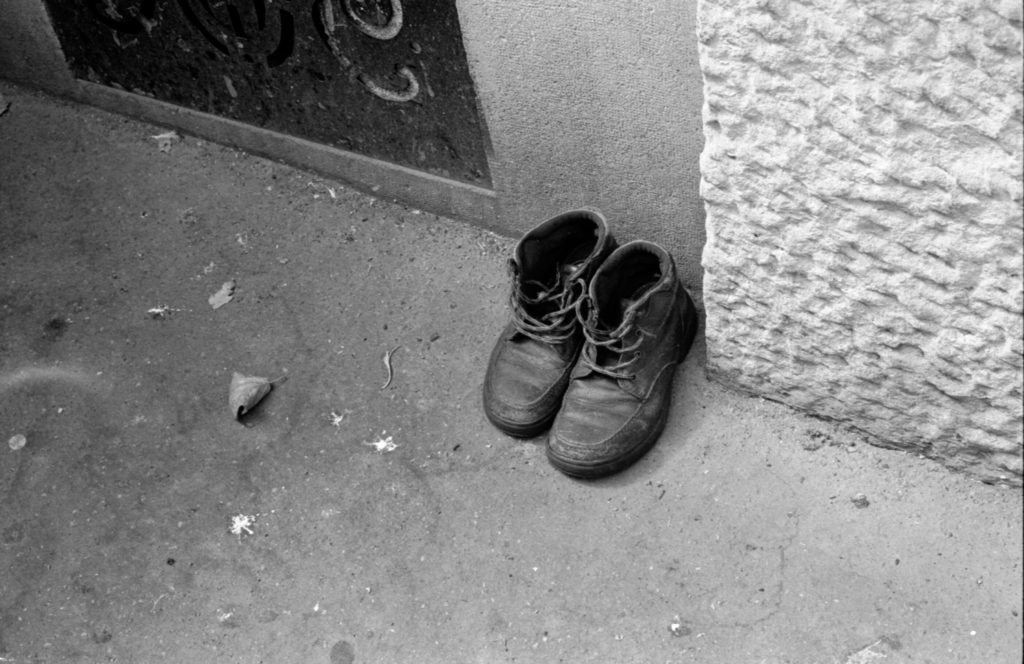 I think it’s time to put the shoes on again…
I think it’s time to put the shoes on again…
By Dr. Henry Joy McCracken. This is an expanded version of the article which first appeared on Dr. McCracken’s excellent blog insolublepancake.org
Over Christmas I had some time to walk around Paris, which I never tire of doing, and to think once again about photography and film photography. In 2016 I had decided to try the project of shooting (at least) one roll of film each week and posting the best photographs from each roll on 52 rolls. I quite enjoyed this and I got to wondering as I did when I started film photography in 2015 what the origin of this attraction really was. As a scientist, of course, I want to understand! I tried writing about this on Leicaphilia, but I learned a lot about photography in 2016.
So I started to read more books with the idea of eventually perhaps writing an article for EMULSIVE. Early on, I came across on a quote from John Szarkowski, writing in the 1960s, which I thought was great:
“Photography had become easy. In 1893 an English writer complained that the new situation had “created an army of photographers who run rampant over the globe, photographing objects of all sorts, sizes and shapes, under almost every condition, without ever pausing to ask themselves, is this or that artistic? …They spy a view, it seems to please, the camera is focused, the shot taken! There is no pause, why should there be? For art may err but nature cannot miss, says the poet, and they listen to the dictum. To them, composition, light, shade, form and texture are so many catch phrases…” (John Szarkowski, from “the Photographer’s Eye”).
Szarkowski’s introduction is one of the most interesting things I have read about photography. He was concerned with creating a new language to describe photography which was not based on the pictorial traditions of the past. Photography is not painting after all. This book was the exhibition catalogue for a show he organised at MOMA, where he was the director of the photography department. Many of the excellent photographs in that book are from unknown photographers. His quote just demonstrates to me that at each period in time people have had the same complaints as today. Mobile phones are destroying photography!
 Mobile phones are destroying photography (with Yeti)
Mobile phones are destroying photography (with Yeti)
Moreover, there is no special reason that film photographers should not not suffer from the same equipment-malaise afflicting some digital photographers today. The image below is of a 1952 newspaper I saw in a recent exhibition, where Cartier-Bresson reluctantly explains his philosophy in taking pictures (if you can read the captions they are particularly amusing to us today, especially about how to take pictures at night with very slow film, just think of all those people who complain that their highly sensitive digital cameras are not sensitive enough):
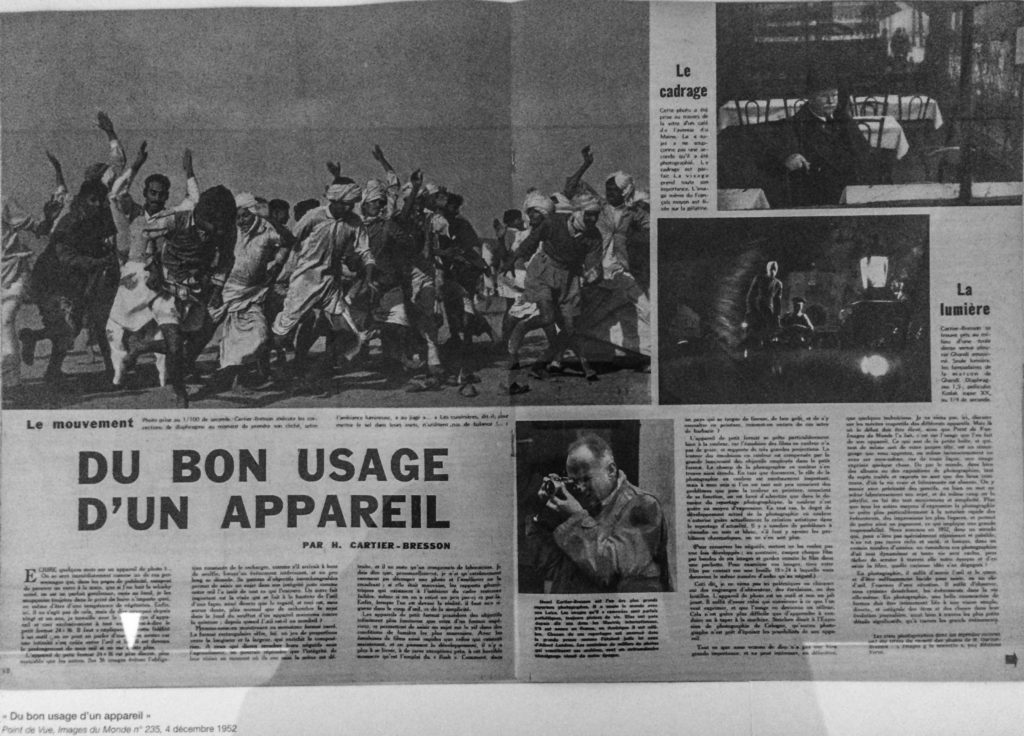 “Du bon usage d’un appareil (Using a camera correctly)”
“Du bon usage d’un appareil (Using a camera correctly)”
Of course, he studiously refuses to talk about lenses and emulsions!
*************
But — this is the question — is there really, really a qualitative difference between digital and film? This of course a subject often discussed here on Leicaphilia. I would need to look at more recent books. After a visit to a show at the excellent Maison Europeénne de la Photographie, I went downstairs to their well-stocked library, and asked them for a few books about photography and digital imagery [Editor’s Note: The Maison’s library is one of the coolest places in the world if you’re a photographer. I recommend everyone spend a few weeks there buried in the books]. A very helpful librarian gave me a pile of books to read. I even left at mid-day, went out in the freezing cold streets on the last day of 2016, ate a sandwich, and came back again. It was kind of fun, it was like studying again as a student. I came across some interesting ideas, some of which I discuss in my article, “”What I learned shooting film for a year for 52 rolls”. Here I would like to expand on the first part of that article.
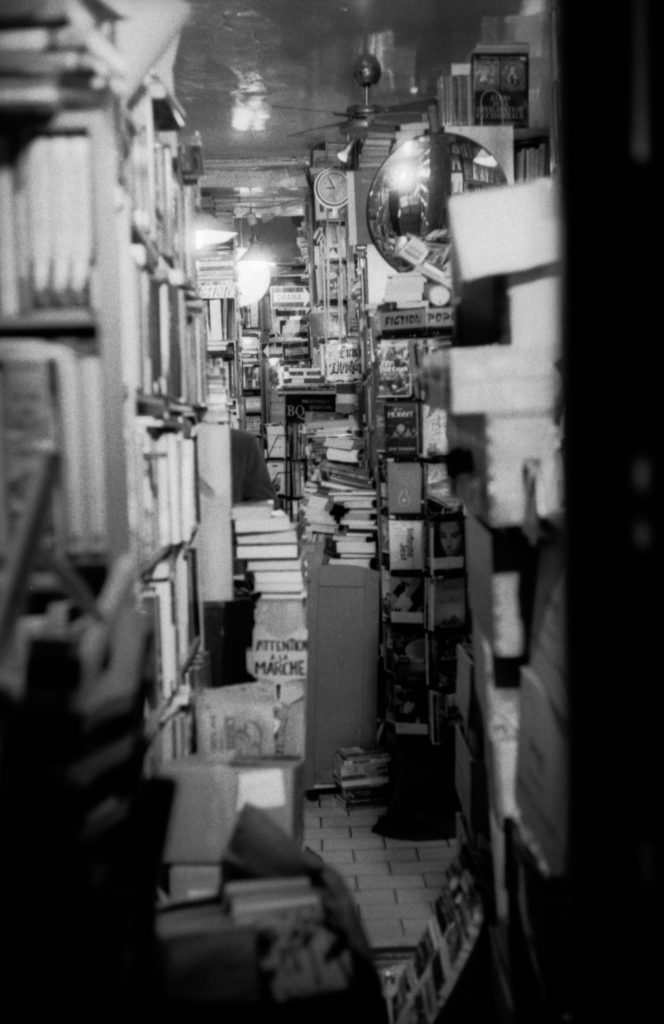 Now let’s go to the library…
Now let’s go to the library…
So, what do the philosophers have to say today? Around this time, I heard about the death of British critic John Berger, who was famous for his influential “Ways of seeing” series. The first episode, which you can see here on ubu.com is excellent (and you should be thankful that the shirts are only in black-and-white). It starts with Berger taking a knife to a painting in a gallery and ends with him turning to the camera and insisting that we must be skeptical. Many of the ideas in his program are taken from Walter Benjamin’s famous essay “The work of art in the era of mechanical reproduction”, which essentially says that each work of art there is an “aura” which is diluted when it is removed from its original context. It makes sense, I think everyone would agree that Caravaggio paintings are better in churches rather than in art galleries or at home on the sofa. And what about today, with our endlessly reproduced digital images?
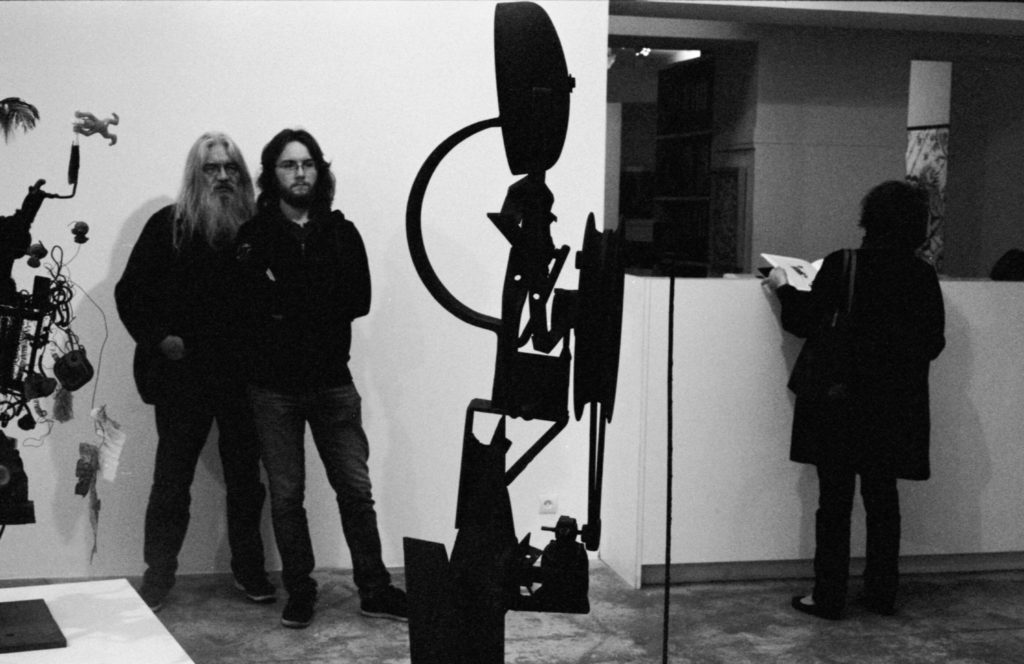 Look closely!
Look closely!
Trying to answer that one I quickly got deeply into writings on photography and images, featuring such luminaries as Sontag, Barthes, Baudrillard, Sartre and more recent writers like Manovich and Lechte. I even came across Flusser, previously mentioned here on Leicaphilia. Being the empiricist that I am I quickly felt I was on unstable ground because a lot of the writings seem to be based on reasonable-sounding assertions which are in fact mutually contradictory. You basically get to choose the point-of-view you like the sound of. So, that’s what I am going to do here, because the point for me is to try understand the emotional reaction one can have when confronted with different kinds of images. What’s worse, considering these philosophers, and I am sorry to level this old criticism: many of them don’t even take photographs!
Well, the one who does take photographs is Baudrillard, so perhaps we should pay more attention to him. His idea in Simulacres et Simulation is that today in our society the (symbolic) representation of things has actually displaced the things themselves [Editor’s Note: Thomas de Zengotita’s magnificent book Mediated is a must read for understanding how representations drive how we think and act]. He has a ‘hit list’ of what bad things can happen to images, and the last one sounds to me suspiciously like a digital image: “it bears no relationship to reality and is its own ‘simulacra'”. So this seems to me what digital images are, simulacra, and perhaps we instinctively realise this when confronted with a purely software-defined image which has been stripped of it’s “aura” by incessant (perfect) digital replication.
 Is this part over yet?
Is this part over yet?
In the end is seems the key difference between film and digital is the mutability of the digital image and how the content of that image is largely defined by software. You might argue that the same is true for film, just substitute “chemicals” for “software” (in my readings I learned that, amusingly, motion-picture films are only ever processed by “open source” developers, ones for which the chemical formula is known). But there is no guarantee that the digital image is real as it is detached from reality: the link to the underlying physical support is most definitely broken. Moreover, there is no reason either that digital imaging should resemble “photography” as the idea of capturing only a single image a time is now completely arbitrary. It is worth remembering the world’s most popular camera, the iPhone, is largely so successful because it has the best software and not because it has necessarily the best lenses or detectors.
Then, of course, there are all the considerations of what the images actually look like, and how the processes of producing images and photographs are different in both cases. It seems to me now that those are secondary concerns, although they certainly influence how the image is created. Leica have now expended a lot of effort in producing a new digital rangefinder which has exactly the same dimensions as the film cameras which made them famous, but it seems to be missing the point. You can feel that there are earnest people at Leica HQ who understand film, and who sense that something has been lost. This is after all the company that brought us digital cameras which only take pictures in black and white or which have no displays to review images. And today although they have now perfectly replicated the action of taking a photograph with a film camera … it is still a digital camera, even if it is a bit smaller, or has no screen, or only takes pictures in monochrome. Amusingly, an internet search for one of the photographers promoting their new camera (Matt Stuart) reveals that he shoots 2-3 rolls on a film Leica for his personal photography each day, despite also having a previous-generation Leica digital rangefinder.
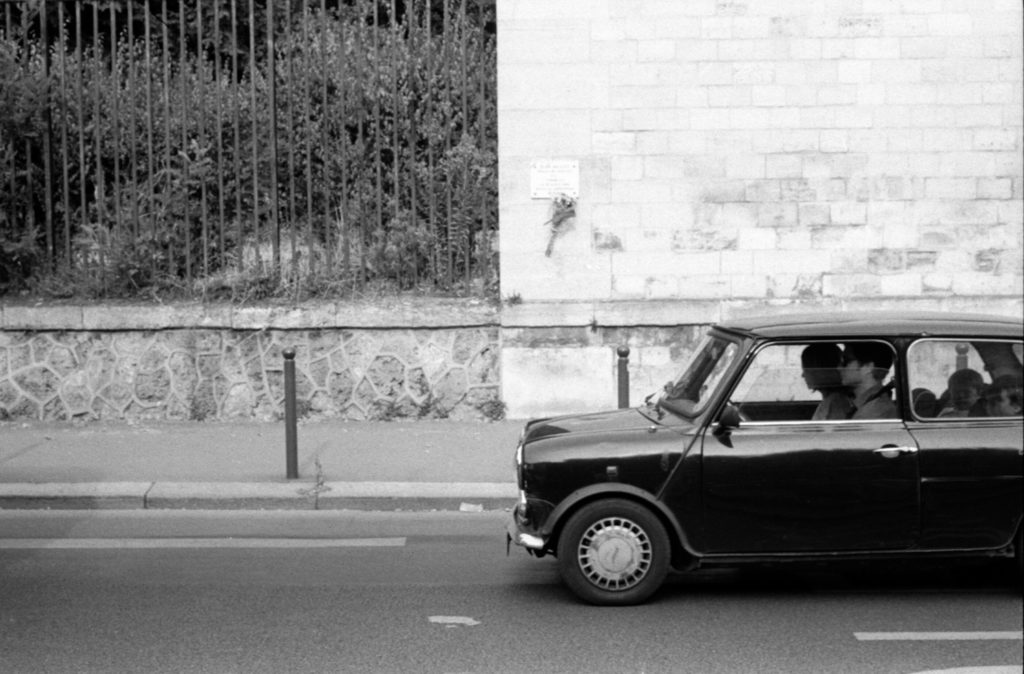 Another Parisian moment (at the observatory wall)
Another Parisian moment (at the observatory wall)
*************
My artist friend Danny says that in his field the debate between digital and analogue ended years ago. There was just one close-to-retirement prof in his department who taught the students how to scratch film negatives. Fun, but much faster in software. It’s hard not argue with the statement that the most important thing is the content of the image itself and not the support it was produced on. One of the philosophers I read (you can guess which one) insisted that, in fact, the image does not exist as a physical object. This certainly goes in the direction of the equivalence of digital and analogue technologies.
![]() But… there is a difference. My conclusion is that I will continue to shoot film. I would love to just make contact prints for a year and not scan anything because the act of scanning and “dematerialisation” of the negative is a pretty contradictory activity after all that I have said here. However, that would mean a lot more time in the badly-ventilated Observatory dark room…
But… there is a difference. My conclusion is that I will continue to shoot film. I would love to just make contact prints for a year and not scan anything because the act of scanning and “dematerialisation” of the negative is a pretty contradictory activity after all that I have said here. However, that would mean a lot more time in the badly-ventilated Observatory dark room…

Thank you for the great piece. I, too, have scratched my head a few times over the fact that I scan my film negatives; it does seem, to some degree, a philistinism. But then, the negative is still there, should I choose to repent.
Don’t repent.
I was doing some clearing out a day or two ago, and came across some old Ektachromes from a tripod-mounted 500 CM and a 150mm Sonnar. They were thirty-something-year-old studio tests I’d shot with my daughter (tight heads), and there she was, holding up cards reading 5.6, 6.3, 8, 9.9,11 and so on. Now, shot with studio flash units, I was shocked to see how yellow both the old light box seems to have become, and the Ektas now look – obviously enough. As bad, how relatively unsharp the lashes and brows were. But the most unsettling aspect of it was this: I realised I’d lost my ability to judge a correct transparency exposure: I wanted a histogram Ektachrome doesn’t have.
Digital has never given me the buzz of using my film ‘blads, but I must now admit that much of the rest of the filmic experience couldn’t compete with what we can do today with small cameras, and I’m not talking cheap digital tricks here, just straight photography. In other words, the tools of then are more satisfying than the tool of today, but the end results can be superior today.
“I would love to just make contact prints for a year and not scan anything because the act of scanning and “dematerialisation” of the negative is a pretty contradictory activity after all that I have said here.”
I don’t really see the further step of scanning a negative as opposed to wet printing it somehow compromising your philosophical stance. My problem with “dematerialisation” is at the point of creation i.e. do you produce a tangible thing – a negative- or a string of 1’s and 0’s present nowhere but supposedly housed is the ether of a computer memory? Scanning is merely putting to further use the physical thing you’ve created, a tangible thing you can file away and keep coming back to, as opposed to an ethereal promise of something instantiated without any physicality somewhere or nowhere.
Yes, perhaps ! I don’t want to come across as a “photographic philosophy taliban” but there is a priori no way to distinguish between a digital file coming from a scanner and one coming from a digital imaging device or computer simulation (in practice of course for Leicaphilia readers it might be easy, but maybe film simulation will get better!). The point is I think is that once the image is represented digitally it becomes defined by software and capable of being manipulated by it. The “aura” is diluted. Think of all the software in the scanning program or in the image display tool. Of course, and this is the good thing, the “point of reference” still exists in the form of the physical negative. Now, that’s if you decide the image rests inside the negative. But … and I will stop here before i dig any further holes 🙂 . Thanks for the comments folks !